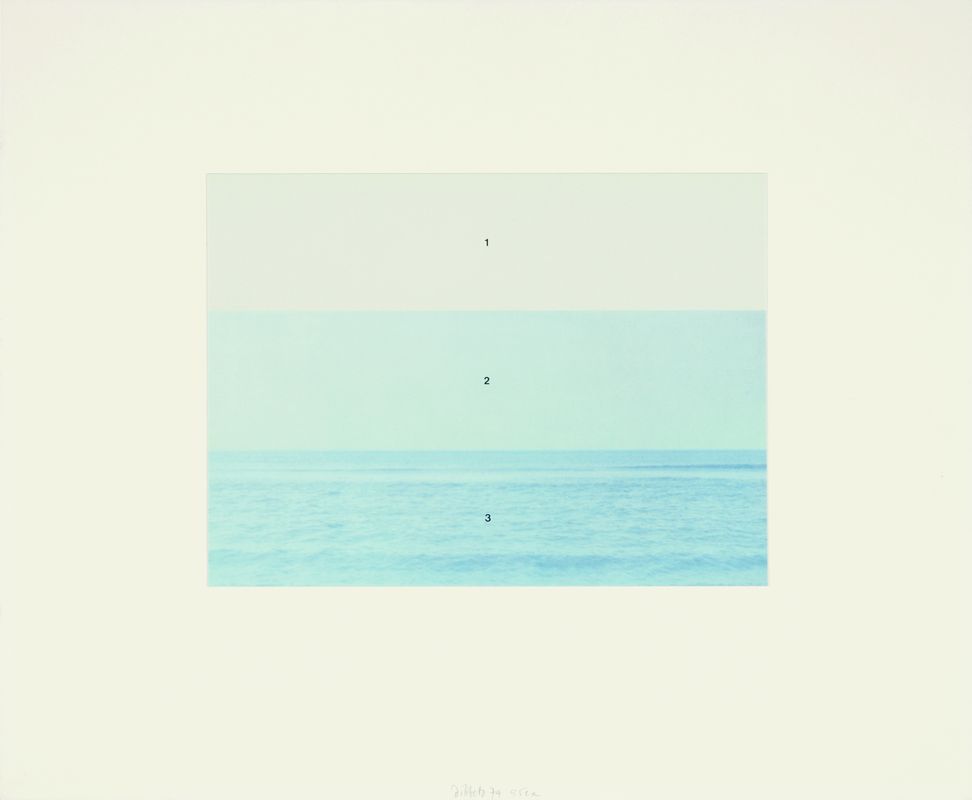Offset lithograph glued on cardboard
From the folder LANDSCAPE (with one graphic each by Christo, Jan Dibbets, Richard Hamilton and Dennis Oppenheim)
Dimensions: 33 x 40 cm
Signature, inscriptions, markings: signed, dated and numbered at lower middle
Copy Number: 39/55
Accession Number: 1001416
The Dutchman Jan Dibbets demands and encourages a close look through his art. His offset lithograph is divided into three horizontal color strips of equal size. They are each designated by a centered number, resulting in a numbering from 1 to 3 from top to bottom. The top stripe in creamy white is followed by the middle stripe in light blue, and the bottom stripe contains both colors, photographically representing a sea surface.
The image structure and perspective give the impression of standing directly on the sea. The horizon line forms a straight line below the monochromatic areas, separating nature from abstraction. Dibbets thus distinguishes between material surface and pictorial surface. While the colors evoke associations such as sky and clouds in the viewer's eye, they simultaneously call attention to the fact that "something is not right" here. Only the colors of the seascape can be seen, but not its motif. With his approach of combining constructive image and documenting image, the artist stands in the tradition of Dutch landscape painting, which has always paid attention to perspective, light and shadow. The evocation of clouds and sky is reminiscent of the seascapes of the Dutch painters Simon de Vlieger (1601-1653) or Jan van Goyen (1596 -1656). Since his Perspective Corrections series of 1967-1969, Dibbets has worked with all kinds of perspective to test the viewer's perception. As a rule, the representationally unambiguous point of orientation is missing.
"Dibbets does not photograph to depict something, but to express something. (...) He chooses a completely different starting point. It is almost a zero point from which photography can escape dependence on depiction on the one hand, and express a clear concept of form on the other. At the end of the account, Dibbets is in the tradition of fine art and, as an artist, is first and foremost an artist of form."1
The work motivates the viewer to reflect on the perception of his environment as site-specific. In the case of landscape, it is always a product of the nature seen and the nature of seeing.
Carolin Liebermann
1 Marcel Vos, Die Fotografie und das Werk von Jan Dibbets, in: Kat. der Ausst. Jan Dibbets. Werke der Jahre 1967–1980, Kunsthalle Bern 1980, S. 2.
